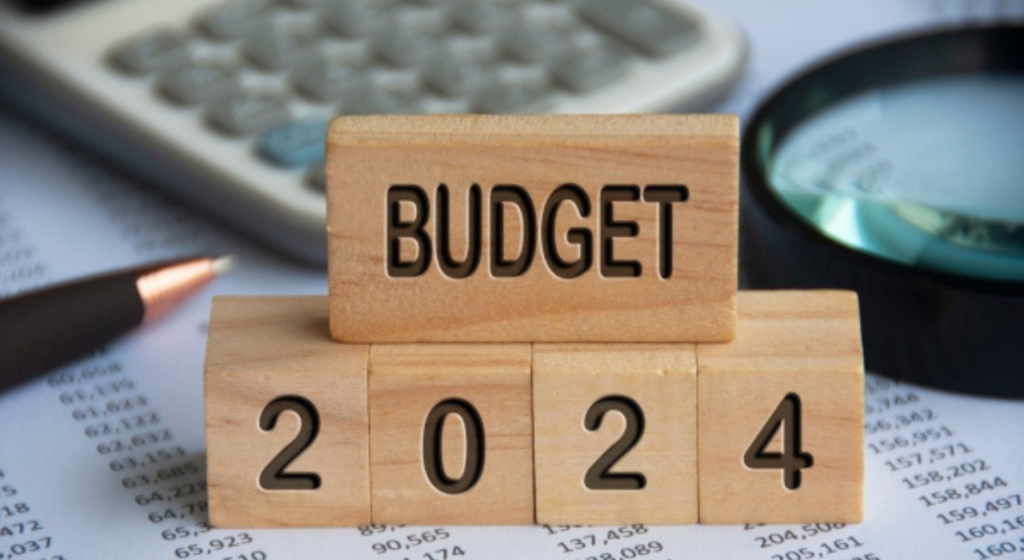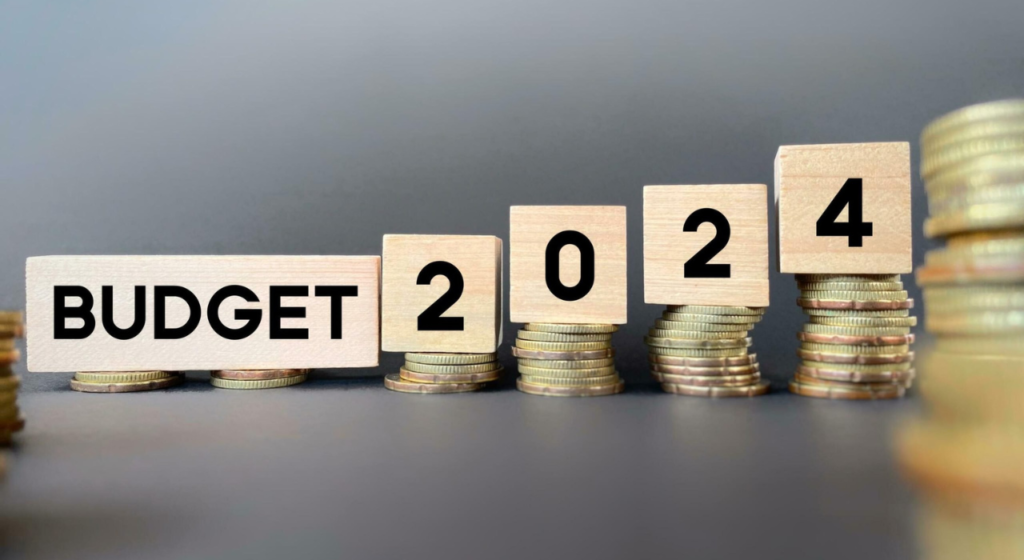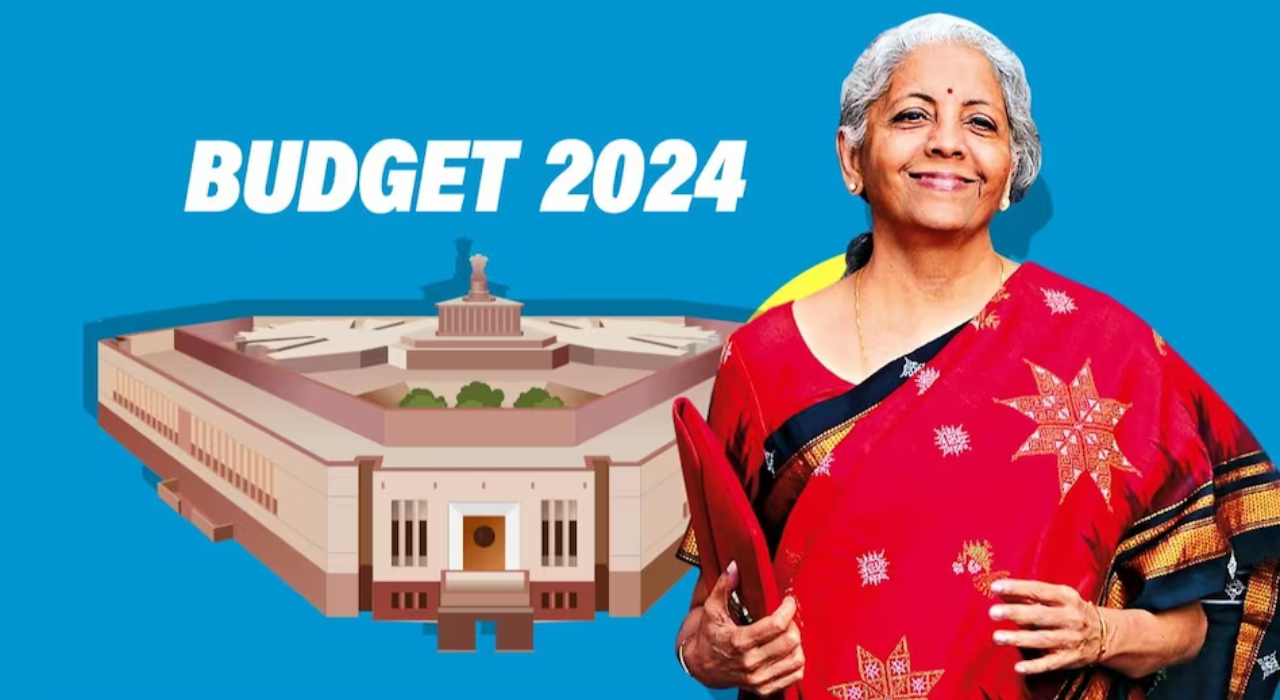Today, Finance Minister Nirmala Sitharaman presented the interim Budget in the Lok Sabha. Let’s take a look at some key points from the presentation.

During her Budget speech, Ms. Sitharaman emphasized the government’s initiatives for women, youth, and the economically disadvantaged. She pointed out the significant transformation in the Indian economy and highlighted the implementation of structural reforms. Ms. Sitharaman underscored the government’s commitment to four key groups — women, youth, the poor, and farmers, stating that the country moves forward when these segments progress.
Here’s a breakdown of the key highlights:
- Finance Minister Sitharaman shared that the government successfully lifted 25 crore people out of poverty in the last decade. Additionally, she highlighted the provision of free food to 80 crore individuals through various schemes.
- Direct Benefit Transfers amounting to Rs. 34 lakh crore via PM Jan Dhan Yojana accounts resulted in savings of ₹2.7 lakh crore.
- The PM Vishwakarma Yojana now offers comprehensive support to artisans, and credit assistance was extended to 78 lakh street vendors under the PM-SVANidhi scheme. Furthermore, 30 crore Mudra Yojana loans were disbursed to women entrepreneurs.
- Emphasizing upskilling and reskilling, over 1.4 crore youth were trained under the Skill India Mission. A total of 43 crore loans were sanctioned under PM Mudra Yojana. The ‘Lakhpati Didi’ scheme will be expanded to empower rural women and stimulate the rural economy.
- The significance of the India-Middle East-Europe Economic Corridor in global trade was highlighted, and there will be a heightened focus on developing the Eastern regions to drive India’s growth.
- Inflation is within the target band of 2%-6%, and economic growth has seen an uptick, resulting in a 50% increase in the average real income of citizens.
- The government plans to subsidize the construction of 30 million affordable houses in rural areas and will encourage cervical cancer vaccination, consolidating maternal and child health care schemes.
- The Ayushman Bharat scheme will extend to all ASHA workers, Anganwadi workers, and helpers. The promotion of ‘Nano DAP’ for various crops and policies supporting dairy farmers and defeating Foot and Mouth Disease are also on the agenda.
- A strategy for achieving self-reliance (AtmaNirbharta) in oilseeds will encompass research, procurement, value addition, and crop insurance.
- A new department, Matsya Sampada, will be established to address the needs of fishermen.
- Transformation of 40,000 rail bogeys to Vande Bharat standards is planned, focusing on enhancing safety, convenience, and the overall passenger experience. Metros will be prioritized to facilitate transit-oriented development.
- The government is committed to achieving Net Zero by 2070, with initiatives such as funding for offshore wind energy generation, procurement of biomass aggregation machinery, and the expansion of the e-vehicle sector.
- Capital expenditure has been increased to ₹11.11 lakh crore for 2024-25. Fiscal consolidation remains a priority, with the aim of reducing the fiscal deficit to 4.5% in 2025-26.
- The government proposed to maintain existing tax rates for both direct and indirect taxes, including import duties. Gross and net government borrowings for 2024-25 are set at Rs. 14.13 lakh crore and Rs. 11.75 lakh crore, respectively, lower than the figures for 2023-24.
Finance Minister’s Marginal Increase for NHAI in FY25 Budget
In her Budget announcement on February 1, Finance Minister Nirmala Sitharaman slightly increased the allocation for the State-owned National Highways Authority of India (NHAI) to ₹1.68 lakh crore for the fiscal year 2024-25. This marks a slight uptick from the revised allocation of ₹1.67 lakh crore in the previous year.
The Budget document for 2024-25, which comes ahead of elections, reveals a slightly enhanced outlay of ₹2.78 lakh crore for the highways sector. In the previous fiscal year (2023-24), an allocation of ₹2.70 lakh crore was initially made for the highways sector, later revised to ₹2.76 lakh crore.
Both NHAI and the National Highways and Infrastructure Development Corporation Ltd (NHIDCL) bear the primary responsibility for the construction of national highways and expressways across India. This reaffirms the government’s commitment to the development and maintenance of crucial transportation infrastructure in the country.
CP&I & Industrial Development Praises Budget’s Railway Corridor Strategy
According to Mohammad Athar, Partner and Leader of CP&I (Capital Projects and Infrastructure) & Industrial Development at PwC India, the budget, with an outlay of ₹11.1 lakh crore, places a significant emphasis on railway corridors to reduce logistics costs. The capital expenditure allocated for airport expansions is seen as crucial to meeting the demands of one of the world’s fastest-growing aviation markets.
Furthermore, the budget’s promotion of public transport investments, spanning metro, rail, electric buses, and regional rail projects, serves multiple national objectives. This includes facilitating urban transformation, alleviating congestion in cities, and advancing the country’s agenda for transport decarbonization.
Athar highlights tourism as a substantial economic development opportunity for India. The encouragement of state-led development of tourism sites, investments in connectivity infrastructure, and the addition of new iconic tourism centers are expected to generate local employment and create economic opportunities across various Indian states.
Finance Minister’s Roadmap for Attracting Investments
In the live coverage of Budget 2024, it was highlighted that the Foreign Direct Investment (FDI) inflow between 2014 and 2023 reached a substantial 596 billion USD, reflecting a golden era of economic growth. Notably, this figure is twice the inflow recorded during the period from 2005 to 2014.
The commitment to fostering sustained foreign investment is evident through ongoing negotiations for bilateral investment treaties with international partners. This initiative aligns with the overarching vision of fostering First Develop India (FDI), emphasizing the importance of collaborative efforts to promote economic development and attract foreign investment.

Finance Minister’s Comprehensive Overview of Budget Estimates for 2024-25
- Total receipts, excluding borrowings, stand at Rs. 30.80 lakh crores.
- The total expenditure is marked at Rs. 47.66 lakh crores.
- Tax receipts contribute Rs. 26.02 lakh crores to the financial landscape.
- The continuation of a 50-year interest-free loan scheme for capital expenditure by states is announced, with an allocation of Rs. 1.3 lakh crores.
- The fiscal deficit for the fiscal year 2024-25 is estimated to be 5.1% of the GDP, aligning with the trajectory of fiscal consolidation.
- Anticipated gross and net market borrowings through dated securities for 2024-25 are Rs. 14.13 lakh crores and Rs. 11.75 lakh crores, respectively, both lower than the figures for the previous fiscal year.
- A noteworthy aspect is the reduced borrowings by the central government, which is expected to open up avenues for more extensive credit availability for the private sector.
Finance Minister’s Vision Through Taxation Measures
In the live updates for Budget 2024, the Finance Minister shared some key proposals:
- Maintaining continuity, there are no proposed changes in taxation. The existing tax rates for both direct and indirect taxes, including import duties, will be retained.
- To ensure consistency and support specific sectors, the Finance Minister proposes an extension of certain tax benefits. These include benefits for startups, investments by sovereign wealth or pension funds, and tax exemptions on specific income for units in International Financial Services Centres (IFSC), with the extended date set at 31.3.2025.
- Addressing a long-standing concern, the Finance Minister acknowledges the existence of numerous unresolved direct tax demands, causing distress to honest taxpayers and impeding the refund process. In alignment with the government’s vision to enhance ease of living and ease of doing business, a significant move is proposed. Outstanding direct tax demands up to Rs. 25,000 for the period up to the financial year 2009-10 and up to Rs. 10,000 for financial years 2010-11 to 2014-15 will be withdrawn. This compassionate measure is expected to benefit approximately 1 crore taxpayers, offering relief and simplifying the tax system.
